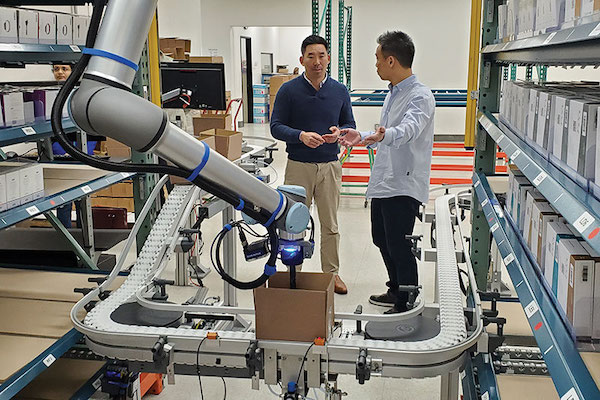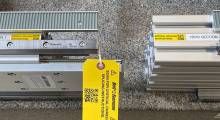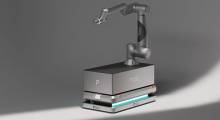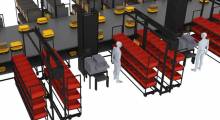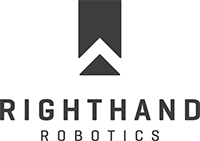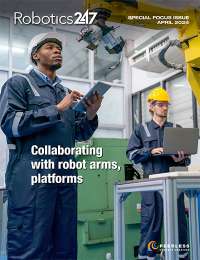The next packaging solution that comes into your DC may look less like a traditional automated pack out line and more like a robotic work cell in manufacturing.
Not that packaging with robots is an entirely new frontier—they are often used to package goods coming off manufacturing lines.
The difference today is that robots are edging further into e-commerce pack-out, where rather than dealing with one SKU, the robot needs the intelligence to handle thousands of SKUs that may come its way.
What’s more, the leveraging of intelligent robotics for e-commerce packaging isn’t futuristic, it’s actually being done. Companies like MSC Industrial, apo.com and DCL Logistics are leveraging robots to place goods directly into shippable cartons. Warehouse robotics vendors also are coming up with solutions that can do things like induct and verify goods going into autobaggers.
Robotics-based packaging growing among facilities
Traditional packaging automation vendors are thriving and enjoying high demand for their solutions, but robotics-based packaging has emerged as another tool that can be applied to packing out the growing volume of e-commerce and small replenishment orders.
Fortunately, industrial robots and similar collaborative robots (cobots) can be combined with robotics software to provide the intelligence to handle the SKU variety found in e-commerce, or for that matter, packing small orders for stores or B2B customers.
Historically, robots have not been very intelligent, but functioned well within narrow tasks with known inputs and outputs, said Stephen Dryer, senior global product manager for robotics at MHS Global. But now, things are changing, he added, both in terms of industry needs and the intelligence level in robotics.
“The opportunity that has opened up is companies have these more variable operations, where the inputs and outputs change, and that is driven by industry needs like more SKU variety, changing inventories, and smaller batch sizes that are happening today as companies try to be nimbler,” said Dryer. “The technologies that provide robots with the ability to handle more variety are vision and artificial intelligence (AI), better grasping, as well as machine learning and better exception-management capabilities.”
Berkshire Grey’s robotic solutions take a turnkey, systems-level approach that includes supporting intelligent materials handling elements like conveyor to properly position and move goods.
Pick-and-place smarts
Robots used in pack out need to have adequate smarts to both pick and place, and to instantly learn on the job as new items come through to be packed.
Numerous vendors have emerged who offer software, AI and vision technology for robotic applications like e-commerce packing. These vendors don’t make the robots—they offer a solution layer for robotics, leveraging best-in-class hardware from robot vendors. This approach has already led to real-world deployments for e-comm pack out.
For example, Netherlands-based apo.com Group, a leader in automated online pharma, uses a fleet of RightPick piece-picking robots from RightHand Robotics to automate key parts of its order fulfillment process.
The robots pick goods from totes coming from a cube storage automation from AutoStore and place order items into outbound cartons. The overall solution picks, scans and places thousands of SKUs a day.
Vision and AI are applied to let the robot know how to pick, but also for how to correctly place items to a destination like a shipping carton, a tote, or to induct into an autobagger, explains Vince Martinelli, head of marketing for RightHand.
“Every time a robot picks, it has to place it somewhere,” said Martinelli. “Sometimes, it’s a simple placing over the middle of a larger container from a safe height, but other times, it’s more complex. Sometimes it matters what’s in the container before you drop an additional item into it, because you don’t want to damage things that are in there.”
“Or, you can have a pattern where you distribute items to minimize things landing on each other,” he added. “We have one customer where we consider what’s already in the tote. We think about its shape and orientation, while imaging its destination.”
RightHand has also demonstrated the ability to induct items into an autobagger, partnering with Accutech, though no end user company has yet signed on to deploy the solution.
Typically, with robotic pack out into shipping cartons, adds Martinelli, an automatic case erector is upstream from the robotic cell, so the solution needs to take into account the order volume that will fit in the size box being made by that case erector. “It tends to work well in sectors like online pharma, where you see many items in the mix that can fit in the same size carton,” Martinelli noted.
Much of the upfront discussions with companies looking at robotics solutions involves figuring out just how much coverage of a DC’s order volume a solution can process, points out Erik Nieves, CEO and co-founder of Plus One Robotics, which makes vision software for logistics robots.
This “entitlement” phase is where the end user company and solution provider figure out which parts of order mix suit a robot, said Nieves. “It’s all about achieving the full capacity of the robot,” he said.
Vision and AI are key to handling variability, said Nieves. With Plus One Robotics’ systems, the vision tech can also be deployed upstream from a pack out robot, to inspect totes, understand dimensions of the items, and route them to the appropriate robotic cell and case erector. Downstream from the robot you typically have further automation for things like document insertion, sealing and labeling.
Robots have been used by MHS for multiple types of packaging solutions, including robotic case packing. End effectors that can grip multiple items with one arm movement maximize throughput.
One company that uses Plus One’s solution for pack out is MSC Industrial Supply, a major distributor of MRO supplies. In 2019, MSC deployed Plus One Robotics’ 3D-vision and AI-enabled robotic packaging system at its customer fulfillment center in Harrisburg, Pa., to enhance efficiencies around pack out. The implementation has encouraged MSC to implement the system across several sites in other major cities.
Packaging systems need appropriate oversight and exception handling to maximize throughput and minimize downtime, added Nieves. At Plus One, this is done with a remote “crew chief” support staff. Exceptions are rare in a well-designed system, Nieves adds, but addressing them systematically is one of the keys to project success, and also, for building market momentum for robotics.
“The more successful projects there are from vendors like Plus One and others, the more the market will look to adopt this, because, A, it works, and B, it doesn’t cost a lot of energy and focus to keep it running,” Nieves said.
Kishore Boyalakuntla, vice president of product at intelligent robotics automation provider Berkshire Grey, agreeed that AI and vision are core enablers that allow robots to know to how pack cartons or bags in a fast, accurate and reliable way even with high SKU variety and zero “teaching” on each SKU.
“Our robot intelligently knows what the box dimensions are, properly orients each item, and gently places it,” Boyalakuntla said. “And, our systems can place an item in the right way to maximize space utilization.”
Systems thinking
Berkshire Grey’s solutions span multiple types of packaging, explained Boyalakuntla, including robotic autoboxer induction, robotic autobagger induction, as well as a robotic put wall solution, which can be deployed using shippable boxes in the slots of the output wall. BG also offers a robotic solution for store replenishment that can automate packing of store orders into containers.
Overall, Berkshire Grey takes a turnkey approach where “intelligent automation” elements such as short runs of conveyor, linear sortation are paired with the core robotics and AI/vision tech, explains Boyalakuntla. “What’s needed is an entire systems-level solution,” he said. “This ensures the solution hits the rate needed.”
Some companies have developed packaging robotics solutions without having to use a layer of AI software or an integrator by leveraging the core platform from a cobot vendor and devising a system that suits a good chunk of its order mix.
For example, DCL Logistics made major packaging productivity strides by implementing a cobot solution built on top of a platform offered by Universal Robots. DCL Logistics is an omni-channel, third-party logistics company primarily servicing emerging and high-growth electronics, digitally native brands and medical technology devices through fulfillment centers in Kentucky, Pennsylvania, Los Angeles and the heart of Silicon Valley.
In the past, it took five people to execute a conventional pick-and-pack process at DCL: someone in the warehouse to pick the order using a wireless device; someone to bring it to the line; someone to verify it; someone to kit it; and someone to pack and ship it. The company wanted to make this process more efficient and began looking at solutions to automate a key part of the overall process, said Brian Tu, chief revenue officer for DCL Logistics.
DCL considered multiple options before finding what it needed in a collaborative robot from Universal Robots. The UR10e model was selected, with DCL configuring the solution on its own, starting at one of its California fulfillment centers in late 2019.
The deployment, which has since been expanded to other sites, has been a success, said Tu, cutting labor costs by 50% for a specific line, with one cobot arm generating the same output in 2 hours that would have taken a team of five people an entire shift to pick and pack.
A strong ROI
“The ROI was strong right from the start in terms of managing costs while increasing output, and in terms of timing, it put us in a good place when the pandemic hit in March 2020,” said Tu. “We had already been seeing a fairly dramatic increase in our direct-to-consumer demand, so when the pandemic hit, we already had this system running to help us handle an extreme acceleration in our direct-to-consumer volume.”
The application includes a conveyor that accumulates boxes, aligns them and moves them into loading position in the cobot cell. The cobot picks up a product every 6 seconds and brings it to a scanner, then puts the product into the shippable carton. If the item is incorrect, the robot places the item in a reject bin and continues picking the next item without pausing production.
Tu said that not all of DCL’s client inventory and orders are suited to the system, but a good portion can be automated with it. “The system is designed to handle certain customer inventory and order profiles, rather than all of our processes and orders, but almost immediately with the cobot system, we were able to reduce the labor requirement significantly, which allowed us to reassign staff elsewhere,” said Tu. “And strategically, the efficiencies allow us to better serve our customers and offer them lower pricing.”
Since the first deployment in California, four other cobot pick-and-pack systems have been deployed: one more in California and three in Kentucky. Tu said that Universal’s cobot platform was easy for DCL’s technology staff to work with without needing to bring in a systems integrator.
Importantly, Tu adds, the cobots don’t take up much space and complement DCL’s existing systems and material flow. “We wanted a flexible solution that could co-exist with our other systems and processes as opposed to totally replacing them,” he said.
Many types of robotics packaging solutions are possible, said MHS’s Dryer, and typically need to work in close concert with systems like conveyors, mobile robots or other systems like automated storage and retrieval systems that feed them the goods to pick and pack. Ultimately, Dryer adds, this involves some integration work, as well as capable software at the warehouse execution system (WES) level to govern order release and material flow.
As a result, the software a solution provider can bring to the table is crucial to creating a smoothly functioning robotic packing solution.
“With software, you can determine what kind of items are in the scope of what the robotic solution can handle and route goods or totes appropriately to manage flow into and out of a goods-to-robot type system,” Dryer concludes. “Software is really the glue that holds it all together.”
About the Author
Follow Robotics 24/7 on Linkedin
About the Author
Follow Robotics 24/7 on Linkedin
Article topics
Email Sign Up

